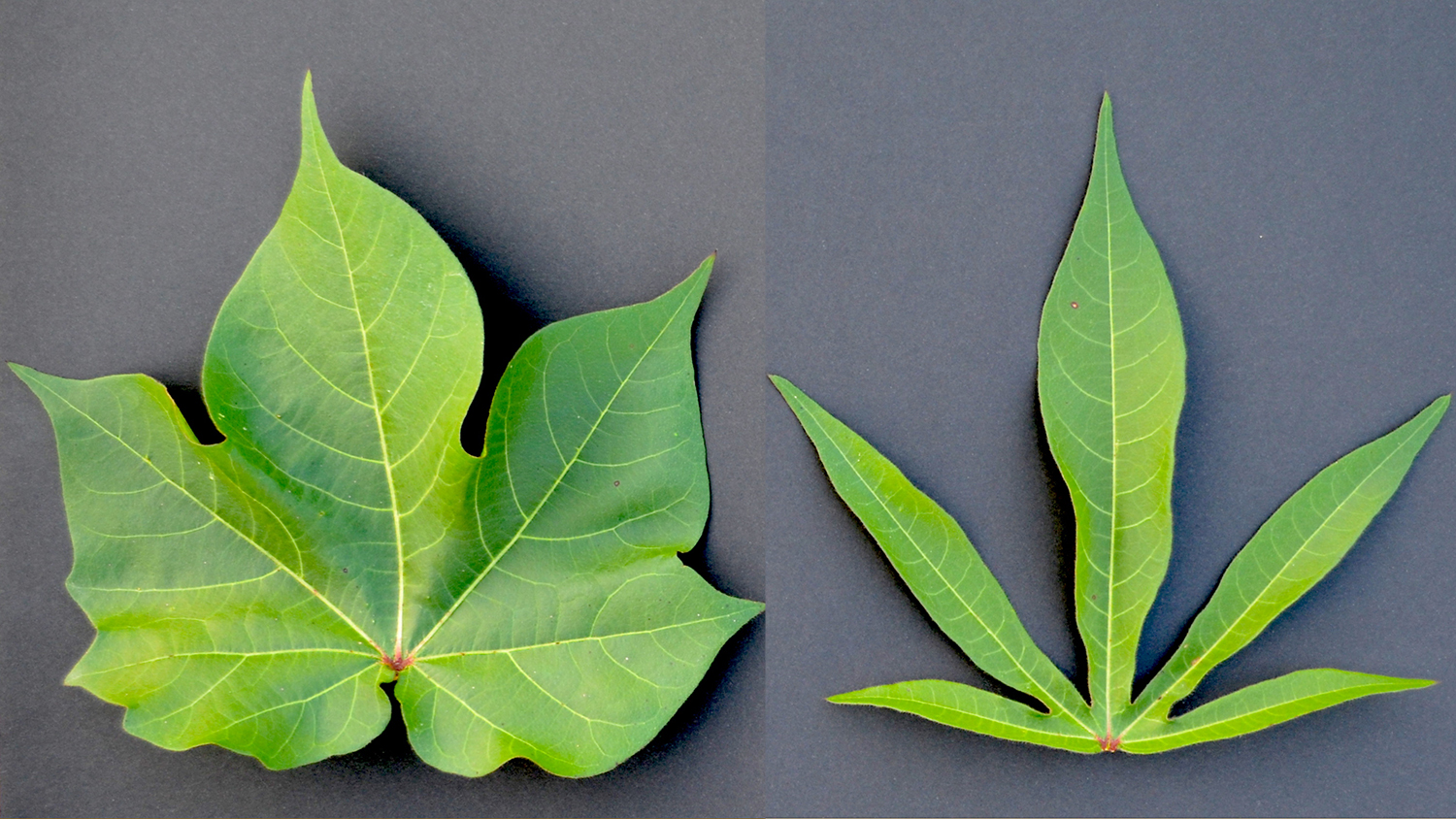Scientists Crack the Genetic Code Determining Leaf Shape in Cotton

Any child who has assembled a leaf collection can prove that plants come with an astounding array of leaf shapes, and researchers know that this variation can mean big differences in a farmer’s bottom line. Now, a new discovery gives plant breeders key genetic information they need to develop crop varieties that make the most of these leaf-shape differences.
In a paper published Dec. 20 in the Proceedings of the National Academy of Sciences, NC State researchers and colleagues from the Danforth Plant Science Center, the U.S. Department of Agriculture and Cotton Incorporated describe how they used genomic and molecular tools to find the location of the DNA sequence that determines major leaf shapes in upland cotton.
The researchers also describe how they manipulated the genetic code to alter the shape of a cotton plant’s leaves in potentially beneficial ways.
This discovery represents a significant step toward developing cotton varieties that produce higher yields at less cost to the farmers, said Dr. Vasu Kuraparthy, an associate professor with NC State’s Department of Crop and Soil Sciences and the project’s principal investigator.
Scientists have recognized that cotton plants with leaves that have five deep lobes, like the leaves of the okra plant, offer advantages to farmers over what researchers refer to as “normal” leaves. Dr. Ryan Andres, a postdoctoral researcher who worked in Kuraparthy’s lab while he was a graduate student, said the so-called “okra” leaf cottons are less susceptible to boll rot than the stably yielding “normal” leaf cotton varieties.
The okra leaves also allow a spray to be more evenly dispersed across a plant and are associated with higher rates of flowering and earlier rates of maturity in cotton, Andres added.
To determine if they’d found the DNA sequence that controlled major leaf shapes in cotton, researchers infected okra-leaf plants with a modified virus that silenced the target gene. That led to a temporary production of normal leaves until the plants overcame the experimental virus and reverted to okra leaf shape.
Kuraparthy and Andres said they hope that this leaf architecture leads to an ideal cotton cultivar, or ideotype, capable of combining the advantages of the two leaf shapes.
“We were able to create our ideotype but only in a transient fashion. One day we want to able to do it in a heritable manner, and the first step in that is finding the gene and proving that this is the gene and these are the polymorphisms in the gene that cause these changes,” Kuraparthy said. “This research does that.”
Dr. Dan Chitwood, assistant member at the Donald Danforth Plant Center in St. Louis, Missouri, explained that, beyond being more conducive to cotton cultivation, the okra leaf type also increases the expression of photosynthetic genes, “providing a link between leaf shape and the ability of plants to convert light into energy for growth.”
Meanwhile, Dr. Candace Haigler, another co-author on the paper, said, “This research represents the leading edge of using modern genetic and plant breeding tools to modify the native traits of crop plants in beneficial ways. We now have the ability to identify and employ ancestral cotton traits to benefit producers and consumers within commercial cultivars.”
Dr. Jeff Mullahey, head of NC State’s Department of Crop and Soil Sciences, said the study not only helped address cotton growers’ needs but also exposed graduate students to training in state-of-the-art plant breeding and genomics technologies.
Cotton Incorporated funded the research, and Dr. Don C. Jones, the research and marketing company’s director of breeding, genetics and biotechnology, called the discovery a “homerun” in the field of cotton breeding.
“The Cotton Incorporated Fellowship that supported Ryan was a sound investment for growers, and Dr. Kuraparthy’s leadership during this course of study was a super effort,” Jones said.
This post was originally published in College of Agriculture and Life Sciences News.